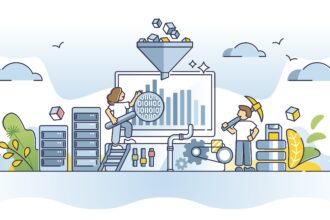Syndicated from BeyeNetwork
In 2005, Mr Ahmadinejad got 17 million votes and in 2009 he got 24 million.
The question is, where did all those extra votes come from?
The answer, according to this study, is not at all clear.
I don’t write political or personal posts and, despite first appearances, this is not one either. When I saw the BBC News post from which the quote above is taken (Iran: Where did all the votes come from?) I was inspired to blog not so much by the specifics of the situation as by the process followed by the folks who investigated the situation. They took a result, one in dispute, but then looked past the simple facts to see how likely the result was to be reasonable and a truthful representation of the voters’ intent.
For instance they went beyond the facts that the vote percentage for Mr Ahmadinejad only rose by 1% and that the poll some weeks before the election also showed him winning. They drilled in to ask questions like “how many more votes does this 1% swing represent” and “are the regional variations the same or similar in the two elections” and “how …
Copyright © 2009 James Taylor. Visit the original article at The election in Iran and some real data analysis.
Syndicated from BeyeNetwork
In 2005, Mr Ahmadinejad got 17 million votes and in 2009 he got 24 million.
The question is, where did all those extra votes come from?
The answer, according to this study, is not at all clear.
I don’t write political or personal posts and, despite first appearances, this is not one either. When I saw the BBC News post from which the quote above is taken (Iran: Where did all the votes come from?) I was inspired to blog not so much by the specifics of the situation as by the process followed by the folks who investigated the situation. They took a result, one in dispute, but then looked past the simple facts to see how likely the result was to be reasonable and a truthful representation of the voters’ intent.
For instance they went beyond the facts that the vote percentage for Mr Ahmadinejad only rose by 1% and that the poll some weeks before the election also showed him winning. They drilled in to ask questions like “how many more votes does this 1% swing represent” and “are the regional variations the same or similar in the two elections” and “how would voting patterns have to have changed to generate this result”. All these questions, and the statistical analysis that backs them, result in interesting conclusions.
But, like I said, this is not a political post about the election in Iran. What I want to ask you is how often you do this kind of analysis when someone presents a conclusion? How often is the data that has been used to base decisions in your company put through this kind of analysis? Is anyone asking the hard questions about the data that drives your company?






